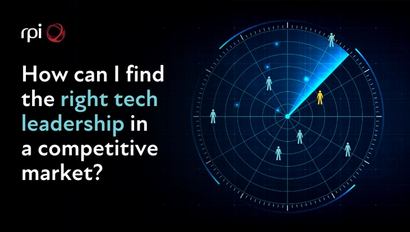The amount of data available to businesses is enormous, and as companies seek to harness that information, the demand for Business Intelligence (BI) grows. Yet despite its popularity, the failure rate of Business Intelligence is very high – Gartner predicted that this year, only 20% of insights will deliver business outcomes.
It seems that despite the clear aspiration that businesses have to inform their decisions and strengthen their operations and proposition with data, few have managed to realise that ambition.
How can businesses bridge the 80% gap between expectation and reality?
Develop and communicate a strategy
An organisation may have an idea that it needs to use business intelligence, and that sense is probably correct, but where many go wrong is to then start implementing it without having established their specific goals. It’s a lot like setting out on an expedition without having planned a route or destination.
Having a business intelligence tool is a means to an end, not an end in itself, and when your teams don’t know what success looks like, they won’t be able to achieve it. The wider company needs to know what the BI tool is for, what they should be getting out of it, and how to achieve it.
Gartner’s research indicated that the lack of understanding about how BI should serve the business was one of two major drivers of project failure. The other was a failure of IT and the commercial departments to speak a common language. Commercial teams and IT teams, even CEOs and CIOs, can approach BI and speak about it in completely different ways, which makes it incredibly difficult for them to steer a project together.
A modern organisation needs leaders who bring legitimate data expertise, commercial calibre, and managerial skills that can bridge gaps and transform departmental interactions. Finding them isn’t easy, which is why experts like RPI can help you fill your executive board with talent that can transform your company’s relationship with data.
Improve data quality
Investing in a cutting-edge business intelligence solution, only to fuel it with poor quality data, is much like building a skyscraper on sand: the project is doomed from the start. Business intelligence initiatives require a lot of groundwork, including:
- Cleaning data: ensuring that your data sets are free of duplicates, inconsistent expressions, partial data, and outdated information
- Structuring data: preparing data in such a way that your business intelligence tool can process and interpret it reliably
- Deciding what to analyse: enthusiasm for the project could lead to muddied water and excessive analysis — consider what data is truly useful to your business objectives
Remember, your solution is only as good as the data you feed it – data quality needs to be a priority early in the project, if not before it even starts.
Choose your KPIs carefully
The other side of the coin for excessive analysis is excessive targeting. With a vast array of insight into company performance, there can be a temptation to target improvements across a whole suite of data points.
Unrealistic numbers of KPIs can demoralise your teams and undermine wider company engagement with targets and the BI project. Start with targets that are the most fundamental commercially. A sense of focus will concentrate team efforts towards your business goals.
When deciding what to prioritise, it’s vital to have team members who can contribute business intelligence expertise as well as commercial vision. Their involvement and perspectives will help to ensure that targets are chosen on the basis of commercial requirements and viability, and reduce the risk of any personal priorities or preferences colouring the process.
Beware of data manipulation
To many, ‘data’ is synonymous with facts and objectivity, which is precisely why it’s so useful for those who (consciously or otherwise) may wish to mislead people. Hard KPIs are difficult to fake, but soft and unofficial incentives like self-promotion and pride can encourage deceptive data practices.
One of the great benefits of business intelligence tools is their accessibility. Users shouldn’t need specialist skills to access BI insights, but that also means that anyone can prepare a graph or chart using the data, present it to colleagues, or use it to guide their own decisions.
There are countless examples of data visualisation being used to deceive and mislead, and whether teammembers consciously or unconsciously manipulate the data, misapprehension can undermine commercial decision-making or disguise weaknesses and failures.
A strong data culture is one safeguard against that — those who live and breathe information are more sensitive to fallacies and more apt to spot data miscommunication. That culture is something else that starts and ends with the talent in your company. It requires C-level data experts to conceive and communicate the vision, and data-savvy managers to implement it.
You can also deepen and strengthen that data culture by educating wider teams.
Train and educate your employees
When the wider company receives data training, they are more likely to notice fallacies and less likely to commit them. They’re also better equipped to notice other issues in data sets, having been trained to spot them.
Training also strengthens the company’s relationship with data. For those unfamiliar with data, training demystifies it, and familiarises them with processes that might otherwise seem intimidating. That, in turn, leads to a sense of professional development, with an emotional investment in the BI project specifically, and business data generally.
As mentioned, specialist skills aren’t necessary for using a good BI tool, and many solutions will sell themselves on that basis, but you shouldn’t take that to mean that no training is required. Many companies buy a solution and set their teams to work with BI, but just because the functionality can be intuitive, that doesn’t mean best practice is.
RPI’s candidate network is full of leaders who understand, data, business transformation, and the commercial drivers of both. Get in touch today to find out how we can fill your organisation with the talent that will make your Business Intelligence project a success.



